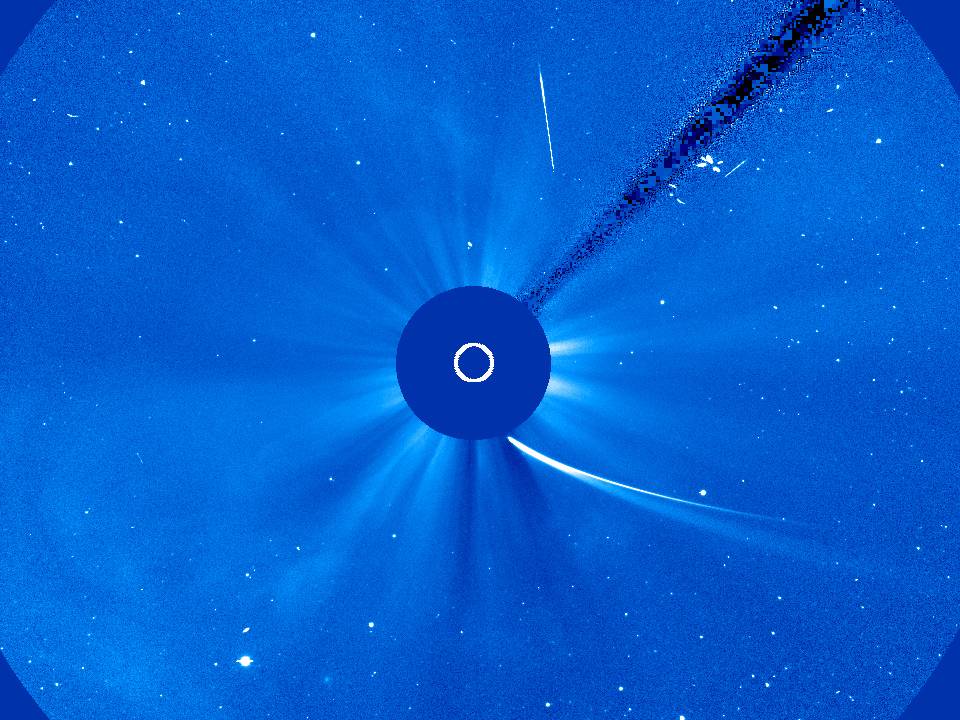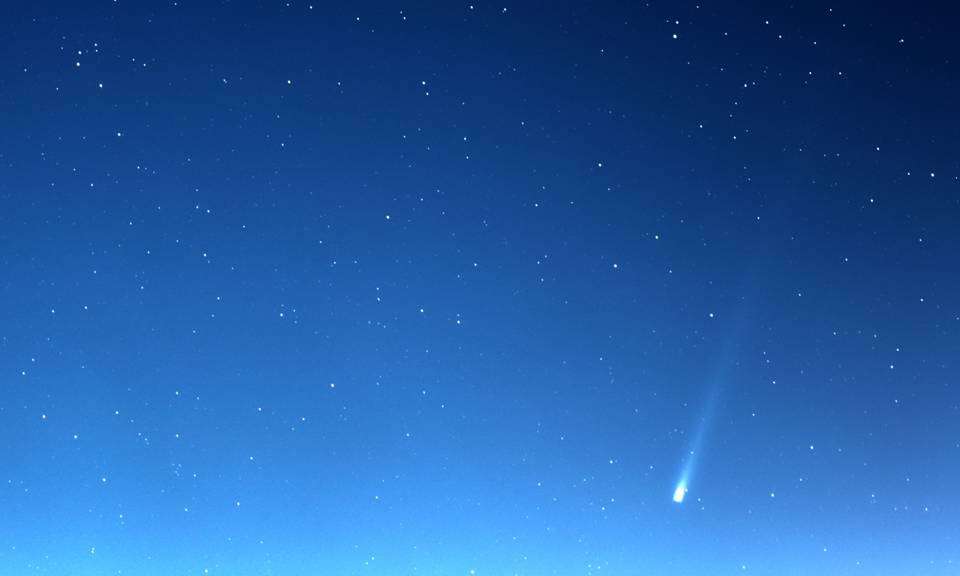Here’s the latest SOHO spacecraft time lapse video of ISON approaching the sun, with perihelion expected today at 1:44 pm EST:
…and a more recent SOHO image, from 10:37 a.m. EST:

The following is from Karl Battam’s blog this morning, where he discusses the tremendous variations in brightness ISON has been undergoing..the rapid dimming in just the last few hours, and what it might (or might not) mean:
Last night I was optimistic that comet ISON would continue its dramatic brightening trend, and soar into the negative magnitudes. This morning it is indeed with a heavy heart that I show you the image opposite, in which we clearly see that ISON has faded rather dramatically in the past few hours. It is still likely around -1 magnitude, but this number is falling fast.
The question on everyone’s lips is “will it survive perihelion?”, and now I’m reluctantly thinking it seems very unlikely to survive at this point. I do think it will reach perihelion, and reach the NASA SDO field of view, but based on what I see it doing right now, I will be very surprised to see something of any consequence come out the other side.
BUT… at every single opportunity it can find, comet ISON has done completely the opposite of what we expect, and it certainly wouldn’t be out of character for this dynamic object to again do something remarkable. Read more.
Blow-by-blow tweets by Karl are posted at @SungrazerComets.
Here’s the NASA Solar Dynamics Observatory near-real time coverage SDO website.
Here’s the Solar and Heliospheric Observatory latest imagery from the SOHO website.
And here’s the Comet ISON News Twitter blog I also follow to get the updates from others who are watching all of the various ISON news and data outlets.
Comet ISON, if it survives perihelion intact, should become visible again the the Northern Hemisphere pre-dawn sky, near the eastern horizon, around December 3. How visible it will be is, at this point, unknown.
Here’s a photo I took the morning of Nov. 20 (I used a Canon 6D, Canon 200mm f/2.8 (at f/5.6), ISO 1600, stack of 70 15-sec exposures for a total of 17.5 min exposure time):


 Home/Blog
Home/Blog



